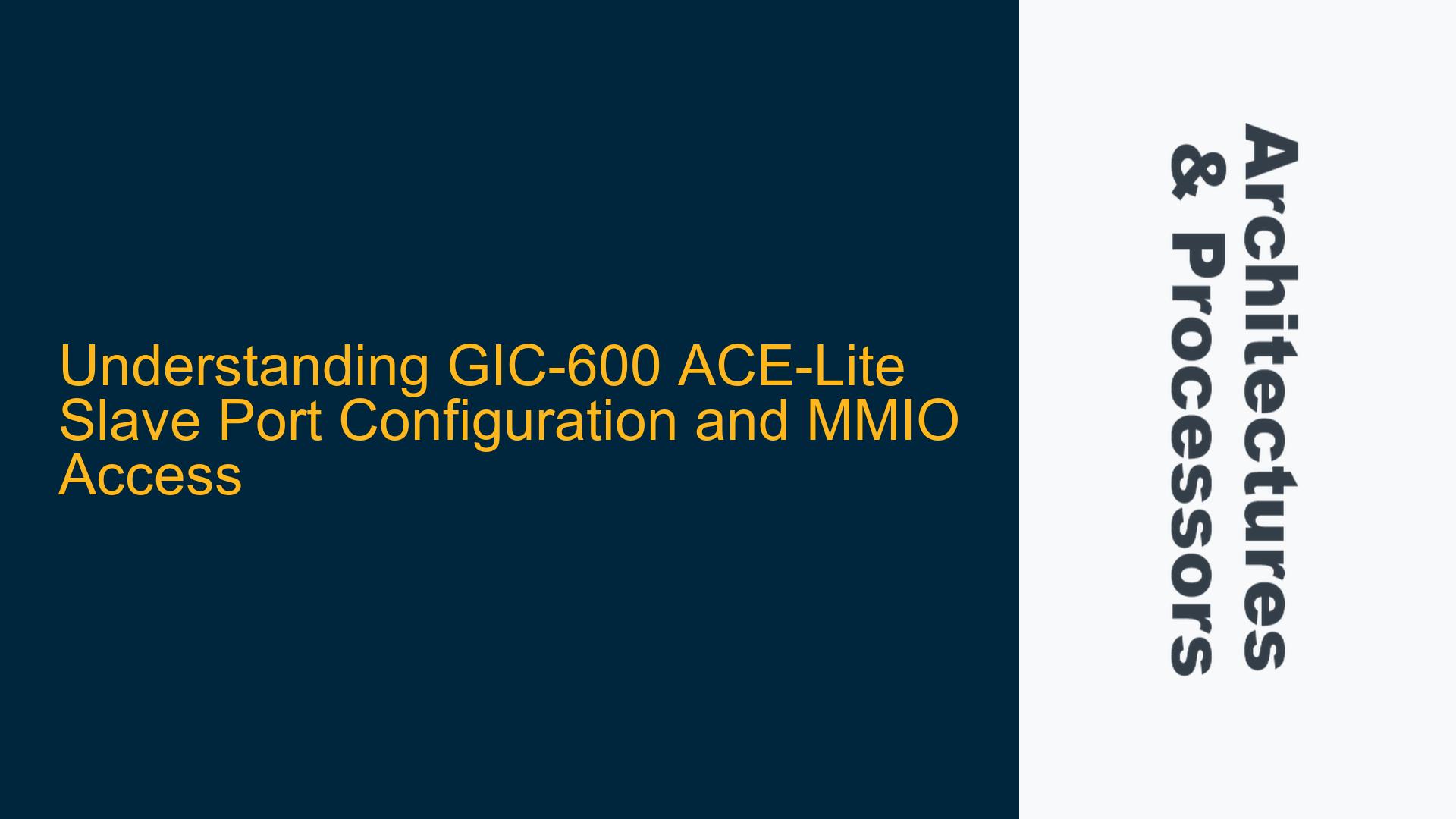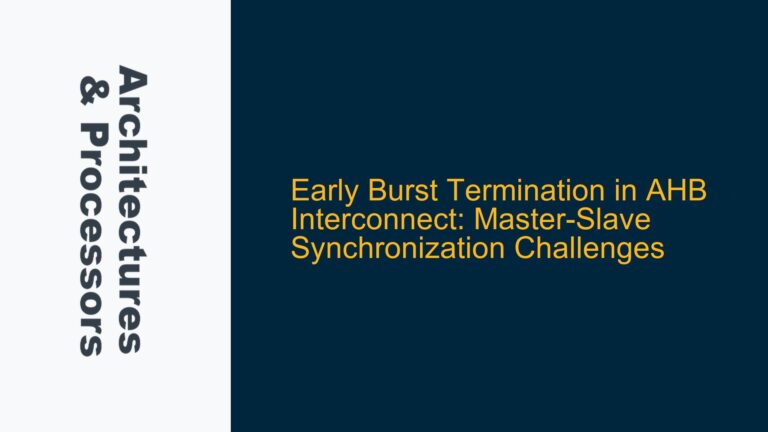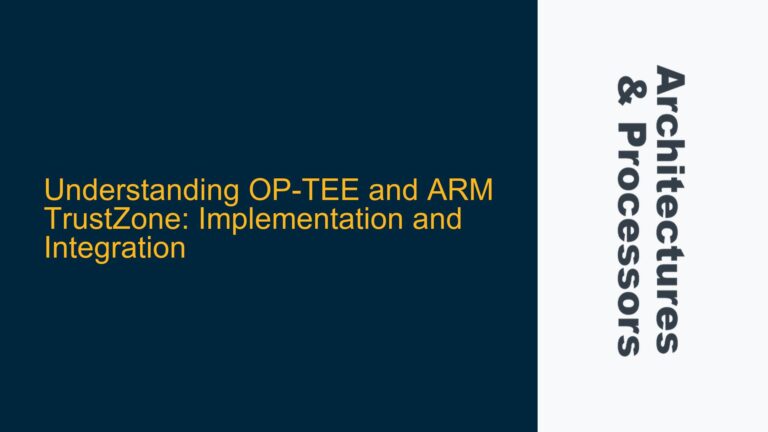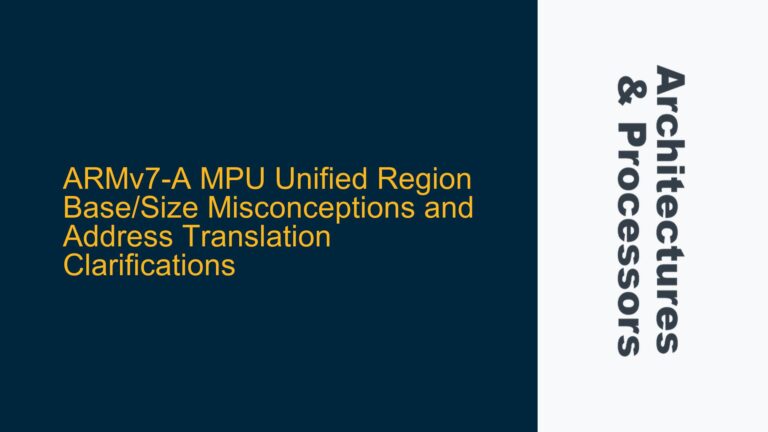GIC-600 ACE-Lite Slave Port and Its Role in Register Access
The Generic Interrupt Controller 600 (GIC-600) is a critical component in ARM-based systems, responsible for managing interrupts across multiple processors and peripherals. One of the key architectural features of the GIC-600 is its ACE-Lite slave port, which is used for accessing its internal registers. The ACE-Lite protocol, a subset of the ARM ACE (AXI Coherency Extensions) protocol, is typically used in systems where cache coherency is required across multiple masters. However, the use of an ACE-Lite slave port for register access in the GIC-600 raises questions, particularly when considering that most System-on-Chip (SoC) designs map device registers to Memory-Mapped I/O (MMIO) space, which is inherently non-cacheable.
The ACE-Lite protocol includes features such as cache maintenance operations, barriers, and coherency channels, which are essential for maintaining data consistency in systems with multiple caches. However, these features are generally unnecessary for accessing non-cacheable MMIO regions, where data is directly read from or written to the device registers without any caching involved. This leads to the question of why the GIC-600 would use an ACE-Lite slave port for register access, and whether this port could be replaced with a simpler AXI (Advanced eXtensible Interface) port.
The ACE-Lite slave port on the GIC-600 is designed to support both coherent and non-coherent transactions. In the context of register access, the GIC-600 typically operates in a non-coherent mode, where the ACE-Lite port behaves similarly to a standard AXI port. However, the presence of the ACE-Lite protocol adds complexity to the system, as it requires the interconnect and other components to support the additional signals and transactions associated with cache coherency. This complexity can be justified in systems where the GIC-600 needs to interact with other components that require cache coherency, but in simpler systems, it may be more efficient to use a standard AXI port.
Memory-Mapped I/O (MMIO) and Cache Coherency Considerations
Memory-Mapped I/O (MMIO) is a common technique used in embedded systems to access device registers. In MMIO, device registers are mapped to specific addresses in the system’s memory space, allowing them to be accessed using standard memory read and write instructions. MMIO regions are typically marked as non-cacheable in the system’s memory management unit (MMU), ensuring that data is directly read from or written to the device registers without any caching involved.
In the context of the GIC-600, the use of an ACE-Lite slave port for register access introduces considerations related to cache coherency. Cache coherency is a mechanism that ensures that all caches in a system have a consistent view of memory. In systems with multiple processors or DMA (Direct Memory Access) controllers, cache coherency is essential to prevent data corruption and ensure correct operation. However, in the case of MMIO, where data is directly accessed from device registers, cache coherency is generally not required.
The ACE-Lite protocol includes features such as cache maintenance operations and barriers, which are used to ensure cache coherency in systems with multiple caches. These features are typically used in systems where data is shared between multiple processors or DMA controllers, and where caching is used to improve performance. However, in the case of MMIO, where data is directly accessed from device registers, these features are generally unnecessary. This raises the question of whether the ACE-Lite slave port on the GIC-600 could be replaced with a simpler AXI port, which does not include these additional features.
One possible reason for the use of an ACE-Lite slave port on the GIC-600 is to support systems where the GIC-600 needs to interact with other components that require cache coherency. For example, in a system with multiple processors, the GIC-600 may need to interact with a cache-coherent interconnect to ensure that interrupt-related data is consistent across all processors. In such systems, the use of an ACE-Lite slave port allows the GIC-600 to participate in the cache coherency protocol, ensuring that all processors have a consistent view of interrupt-related data.
However, in simpler systems where the GIC-600 does not need to interact with other components that require cache coherency, the use of an ACE-Lite slave port may be unnecessary. In such systems, a standard AXI port could be used to access the GIC-600’s registers, simplifying the system design and reducing the complexity of the interconnect.
Implementing AXI Port for GIC-600 Register Access
In systems where the GIC-600 does not need to participate in cache coherency, it may be possible to replace the ACE-Lite slave port with a standard AXI port. The AXI protocol is a simpler and more widely used interface for accessing device registers, and it does not include the additional features associated with cache coherency. Implementing an AXI port for GIC-600 register access would involve modifying the GIC-600’s interface to support the AXI protocol, and ensuring that the interconnect and other components in the system are compatible with the AXI interface.
One of the key differences between the ACE-Lite and AXI protocols is the presence of cache coherency-related signals in the ACE-Lite protocol. These signals include the ACVALID, ACREADY, CRVALID, and CRREADY signals, which are used to manage cache coherency transactions. In the AXI protocol, these signals are not present, simplifying the interface and reducing the complexity of the interconnect. To replace the ACE-Lite slave port with an AXI port, these signals would need to be removed from the GIC-600’s interface, and the interconnect would need to be modified to support the simpler AXI protocol.
Another consideration when implementing an AXI port for GIC-600 register access is the handling of barriers and cache maintenance operations. In the ACE-Lite protocol, barriers and cache maintenance operations are used to ensure that data is consistent across all caches in the system. In the AXI protocol, these operations are not supported, and data consistency must be managed by the software. This means that in systems where the GIC-600 is accessed using an AXI port, the software must ensure that any data written to the GIC-600’s registers is immediately visible to all processors in the system.
In practice, this can be achieved by using memory barriers in the software. Memory barriers are instructions that ensure that all memory operations before the barrier are completed before any memory operations after the barrier are started. By inserting memory barriers after writing to the GIC-600’s registers, the software can ensure that the data is immediately visible to all processors in the system. This approach is simpler and more efficient than using the cache coherency features of the ACE-Lite protocol, and it is well-suited to systems where the GIC-600 does not need to participate in cache coherency.
In conclusion, the use of an ACE-Lite slave port for GIC-600 register access is primarily motivated by the need to support cache coherency in systems where the GIC-600 interacts with other components that require cache coherency. In simpler systems where the GIC-600 does not need to participate in cache coherency, it may be possible to replace the ACE-Lite slave port with a standard AXI port, simplifying the system design and reducing the complexity of the interconnect. However, this approach requires careful consideration of the handling of barriers and cache maintenance operations, and it may not be suitable for all systems.






